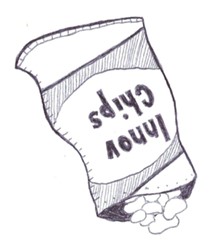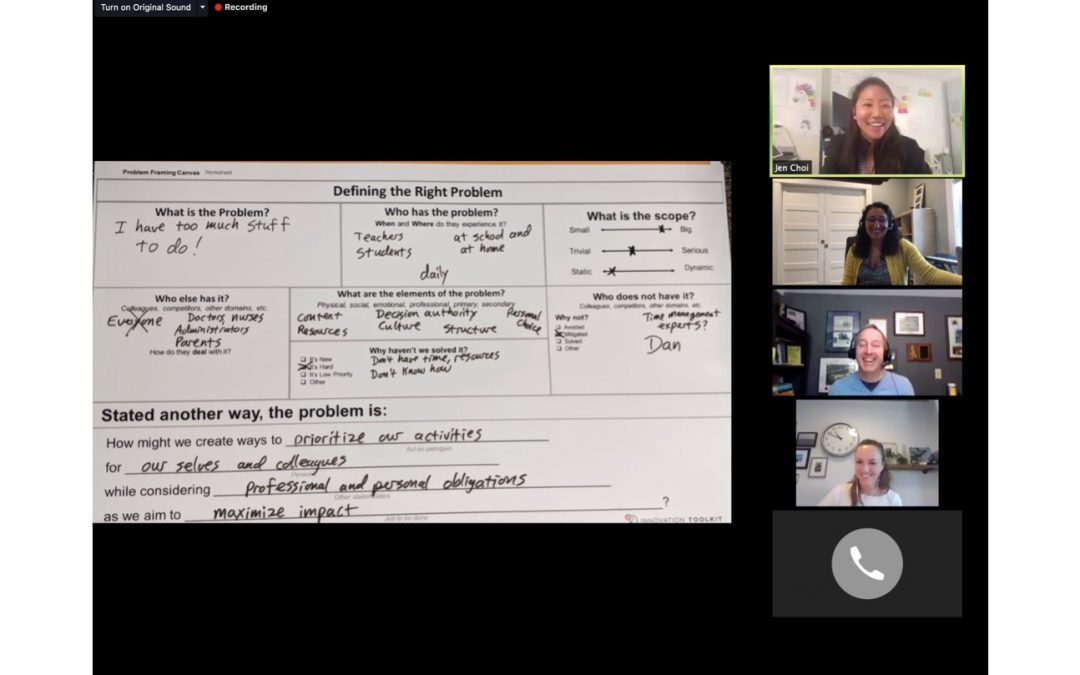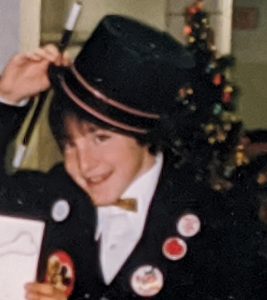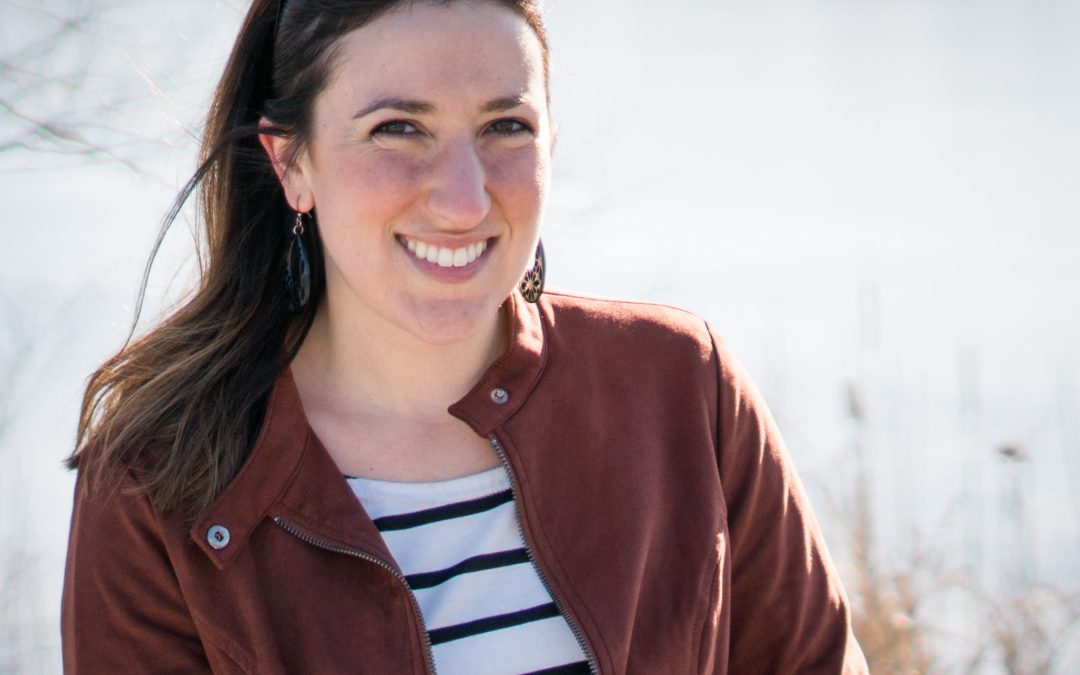by dbward | Aug 9, 2021 | Keeping up with the team, Misc Awesomeness
This week’s post is by Tracey Amos
In early May, MITRE’s Health Leadership Development team partnered with the Innovation Toolkit (ITK) team to deliver a weeklong Innovation Toolkit training series focused on hands-on use of several of the most popular Innovation Toolkit tools – Lotus Blossom, Mission and Vision Canvas, Problem Framing and Premortem.[1]
The series kicked-off with two 1-hour ITK overview sessions. The overview sessions drew over 200 participants and based on feedback, provided a valuable introduction and insights into how to use the Innovation Toolkit tools. In the words of one participant: “I had only heard about the ITK but didn’t really understand what it was. The session was a great introduction to the set of tools.”
The kick-off event was followed by five days of tool specific training. Two of the sessions were structured around use cases for current MITRE projects.
One session focused on the Premortem tool training: Project Leader Iris Sherman partnered with ITK facilitators Gabby Raymond and Jonathan Rotner to build a use case exploring possible impacts of not implementing a MITRE program recommendation in its final report. Using the Premortem tool, the training session framed and explored a worst-case scenario and used the input to define an updated goal and risk mitigation strategy. In the words of one participant: “Instead of waiting until the end of a project to find out what went wrong, and learn for the future, we can use this technique to go on an “imaginary time travel” to avert real failures.”
The other session focused on the Problem Framing Tool: Project Leader Audrey Winston partnered with ITK facilitators Tracey Amos and Tammy Freeman to build a use case to examine how Robotic Process Automation (RPA) and Artificial Intelligence (AI) might be applied to increase the ability of Medicare website visitors to complete routine tasks or search information without costly human intervention and to understand how other organizations serving similar populations (e.g., senior citizens, disabled, caregivers) use RPA and AI. The training session provided an opportunity for the MITRE project team to engage in a collaborative conversation with others, broadening their perspective around areas where automating processes using RPA and AI could potentially be a “game changer.” The team is confident that a compelling case can be made for further exploration in this opportunity space.
The Innovation Toolkit Training week ended with a “Meet the Authors” Roundtable event where members of Team Toolkit engaged attendees in discussion about the inspirational journey to curate the ITK suite of tools and to discuss their recently published book, The Toolbox of Innovation, a lively, playful gamebook written in a’ choose your own adventure’ style.
The Innovation Toolkit Training week was part of a suite of FY21 leadership development and training opportunities sponsored by Health FFRDC leadership as part of their commitment to “building trusted and innovative leaders.”
Throughout the course of the week, participants expressed interest in learning more about the ITK tools and how to apply them to engage their teams and their sponsors. In response, several Health FFRDC “pop-up” ITK events are being planned for later this summer! Stay tuned.
Has your project also used the ITK? Please comment and share your story!

by ITK Administrator | Mar 8, 2021 | Keeping up with the team, Misc Awesomeness
Today’s post is by Allison Khaw!
Can a diverse group of seven engineers and designers write a book? Can they write a book about innovation, teamwork, and problem solving, in a collaborative fashion, while working in a virtual environment?
The answer is yes.
In fact, that’s exactly what seven of us on the MITRE Innovation Toolkit team did this past year! Fresh off the press, our book is called The Toolbox of Innovation, and we—Jen Choi, myself (Allison Khaw), Gabby Raymond, Dan Ward, Kaylee White, Niall White, and Jessica Yu—couldn’t be more excited to share it with the world.
As the first line of the book says, it was an experiment. We didn’t know how our book would turn out, or if it would turn out. There was only one way to know the answer, and that was to sit down and start putting words on the page.
We used a writing style similar to the “Choose Your Own Adventure” books that were popular in the eighties and nineties, except that we placed our characters in a real-world setting. You—the reader—are the protagonist of the story, which revolves around a passionate team applying innovation methods to develop a product that will delight its users. Depending on the path you take through the book, you’ll learn about intrapreneurism, self-advocacy, problem framing, prototyping, failure, and more. If you encounter a dead-end in your current path, simply turn around and make a different choice.
 Throughout the writing process, we focused on ways to be more collaborative and creative. We took on the scenes we were most passionate about, learning firsthand that messy first drafts are inevitable. We edited each other’s scenes without feeling like we needed permission. As our book took shape, we incrementally built our cast of characters and mapped out the myriad plot threads. We also learned about self-publishing and the effectiveness of fiction in teaching real-world lessons. Ultimately, it was an exercise in shared leadership as well as a refreshing opportunity to embrace risks.
Throughout the writing process, we focused on ways to be more collaborative and creative. We took on the scenes we were most passionate about, learning firsthand that messy first drafts are inevitable. We edited each other’s scenes without feeling like we needed permission. As our book took shape, we incrementally built our cast of characters and mapped out the myriad plot threads. We also learned about self-publishing and the effectiveness of fiction in teaching real-world lessons. Ultimately, it was an exercise in shared leadership as well as a refreshing opportunity to embrace risks.
It was an incredibly rewarding experience, in more ways than one.
One of my favorite parts of our book is its playful nature. You’ll find scenes involving Bigfoot, failure cake, juggling, and alternate endings, not to mention a suspiciously large number of potato chip references. (You’d think we were sponsored by a snack food company—nope, our characters just really like chips!) Each of the co-authors brought a different perspective to the table, and we’ll be finding ways to share our experiences and lessons learned, starting with this blog post. We want to help you perform your own experiments, in all their glory.
Now, what are you waiting for?
If you want to find out more, go to The Toolbox of Innovation
If you are undecided, mull it over and then re-read the previous line
When you’re ready, turn to the first page of the book, and take the story where you will. It’s your adventure, after all—you get to call the shots.

by rgregorio | Sep 14, 2020 | Keeping up with the team, Tools 101
Bridging Innovation frequently partners with MITRE’s Innovation Toolkit (ITK) team – also known as “Team Toolkit” – to train our employees, government sponsors, and startups learn how to be innovative and jumpstart the innovation process. Using the user-centered methods in the ITK will help teams to ask and answer the right questions, build consensus around the problem they’re trying to solve, and design the right thing.
The ITK is a curated collection of tools to empower us to think and work more like innovators. The Toolkit is made up of 25 lightweight, low-cost, high-impact methods and templates that get everyone innovating, regardless of their domain. All tools come with a template and description of how to use it on the website. The tools are organized into use cases on the ITK website.
In July, Rachel Gregorio, from Team Toolkit, introduced the ITK to the MassChallenge Texas cohort. She provided the startups with some suggested tools that they can apply to some typical use cases, such as using Premortem to plan ahead and assess risks, Rose, Bud, Thorn to capture rapid feedback from users, and Mission Vision Canvas to define where their company is going.
Also in July, Team Toolkit hosted a virtual Challenge Statement training for members of the Banshee program, a 2-week innovation training program run by Hanscom Air Force Base and MassChallenge for Air Force and Army acquisition programs. Using 3 tools from the ITK, Jen Choi, Rachel Gregorio, Marissa McCoy, and Dan Ward led 60 program participants through a tool chain – where the output of one tool leads to the input of the next tool – to develop challenge statements releasable and generalized for industry.
Team Toolkit started by explaining the Lotus Blossom, a divergent ideation tool, before converging around their favorite ideas using the Stormdraining tool. Next, the participants walked through the Problem Framing tool to reframe and refine their problem statement. Taking the final outputs from the tool chain, they were encouraged to further generalize the statement, line-by-line, to ensure it removed acronyms, jargon, and specificity to mission.
Participants in the Banshee program learned powerful methodologies and easy to use tools to shape their problems and solution needs in clear and concise language without being prescriptive in the implementation. This approach opens the door for finding game changing innovative solutions
If you’re interested in working with Team Toolkit, feel free to reach out to the team via our Contact form and subscribe to their newsletter to stay up-to-date on all things innovation!
by dbward | Jul 20, 2020 | Keeping up with the team, Misc Awesomeness
 My career as a stage magician began when I was rather young – the photo that accompanies this post is me – The Great Houdani – at age 12, dressed up in my tux and ready to perform one of my first paying gigs at an office Christmas party. All through high school and college I did the birthday party circuit, performed at libraries, hospitals, street festivals, and an occasional breakfast-with-Santa-at-the-mall. I loved being on stage, the money was pretty good, and it was a lot of fun.
My career as a stage magician began when I was rather young – the photo that accompanies this post is me – The Great Houdani – at age 12, dressed up in my tux and ready to perform one of my first paying gigs at an office Christmas party. All through high school and college I did the birthday party circuit, performed at libraries, hospitals, street festivals, and an occasional breakfast-with-Santa-at-the-mall. I loved being on stage, the money was pretty good, and it was a lot of fun.
I mention all that because sometimes innovation seems like magic. When new technologies or products suddenly appear, when old organizations transform into something new, it’s tempting to come up with mystical explanations. We mistake the inventors, leaders, and change-makers for wizards with access to otherworldly powers, and we speculate about what sort of magic words or gestures they employed to produce such amazing results.
Like stage magic, the reality of innovation is inevitably quite ordinary. Nothing supernatural is actually going on. Instead, we spectators simply did not see what happened behind the curtain and are unaware of all the pre-show setup that made the supposed miracles possible. Sitting in the audience, we fail to notice the hidden slight-of-hand maneuvers. We have no idea how many months of patient practice were necessary to make the performance appear effortless and natural.
Yes, innovative people genuinely do things differently than their status-quo-oriented counterparts. However, neither magicians nor innovators are suspending the laws of physics, nor are they literally doing the impossible. They’re just doing something different. And that’s good news, because it means we can all follow their example and bring a little magic and innovation to our work.
It turns out good innovators and good magicians have a lot in common. For starters, both groups emphasize creativity and imagination. They put in the effort to develop their creativity and bring imagination to bear on their craft. One way we can develop our own creativity is to ask good questions.
When David Copperfield made the Statue of Liberty disappear in 1983, he did not begin with the solution in mind. Instead, he started by asking himself what sort of illusion could not be done. He knew full well that performers make small things disappear inside theaters all the time, but making a national monument disappear in an outdoors setting would be truly impossible. Now that he had an idea of a trick that could not be done, he began the work of figuring out how to do it.
Next, magic and innovation both require a dedication to learning. Practitioners of both arts need to read a lot and spend time with mentors, coaches, and collaborators who can teach them new tricks. As a kid, I read dozens of books about magic and performing. I joined the Society of American Magicians and read their magazine cover-to-cover every month. I was fortunate to find a mentor in Roger Way, aka Skipper The Clown, whose coaching about magic and showmanship made a huge difference in my shows.
As we study, it’s important to make sure our learning includes practical skills as well as academic information. A magician who knows all the technical terms for slight-of-hand moves but has not physically mastered them is like an innovator who can speak at great length about the difference between disruptive innovation and sustaining innovation, even though they have neither disrupted nor sustained anything. So by all means, read books and listen to TED talks. But then set up a mirror and practice that coin trick over and over until you can even fool yourself.
Next, both disciplines require collaboration and people skills. The best performers and innovators tend to have strong relationships with long-term partners. Think Penn and Teller, or Jobs and Wozniak. Once again, this is something everyone can do. We can all take steps to build a diverse and inclusive network, reaching out to people and putting in the time needed to build strong teams.
Bear in mind that good partnerships go beyond the stage itself and extend into the audience. Plenty of magicians are technically competent but have no stage presence and end up boring or alienating their spectators. Similarly, all too many technologist fail to communicate effectively, which greatly limits the impact of their work.
Finally, magic and innovation both require a willingness to experiment and to take risks. Sometimes the risk is physical, like the time I almost drowned myself on stage doing a water escape (spoiler alert – I escaped and survived). Other times the risk is less severe, like every time I do a card trick and hope the audience doesn’t notice the secret move I’m doing right beneath their nose.
Similarly, every innovator must dedicate time and resources to performing experiments with unpredictable outcomes. The key is to start small and do an incremental series of iterative tests, gaining experience and confidence over time.
It’s been years since I picked up a magic wand, but the lessons I learned as a performer continue to influence my work today. I still read deeply, practice constantly, ask questions, build partnerships, and do experiments. And the good news is, no matter what kind of work you do, these behaviors can help bring a little magic to your day too.

by rgregorio | Jun 8, 2020 | Keeping up with the team |
It’s day 80 of quarantine and social distancing in COVID-19. Day 80 of wearing a mask at the grocery store and wiping down everything with Clorox wipes. Day 80 of not hugging my closest family and friends. Day 80 of working from home, sitting on back to back virtual meetings. I don’t know about you, but it’s getting old.
Like many, the first few weeks of “stay-at-home” were a refreshing change of pace from the hectic commuter life and travel schedule. Getting to tackle projects in the peace and quiet of your own home away from the office allowed for a mental refresh and more productive schedule. We got creative with moving our in-person meetings to virtual, trying out new tools to replace whiteboard sessions, and uploaded our favorite scenic destinations as our Zoom backgrounds. “Look at me, I’m working from the beach in Hawaii!”
But now that we’ve been in this for close to 100 days, the novelty has worn off and the need for synchronous communication and constant meetings has become grating. Without the short walk between conference rooms, there is no time to switch contexts from meeting to meeting and even less time to get work done, unless you multi-task during another call, thus making that meeting less productive. I’ve found myself overemoting on webcam calls, constantly aware of my facial expressions in the bottom corner of the screen and feeling a pressing need to connect with people through the camera. How long and hard can I stare at the bright green light next to my webcam before going blind?
I am grateful to have a job that allows me to work from home in these unprecedented times, so I do grapple with complaining about a first world problem of privilege. I surface the issue of burn out because if we ignore the burn out, we won’t make it through this period of quarantine and long-term future of quarantine. What can we do about the need for constant virtual meetings, given remote work appears to be our “new normal”? I’ve tried a few strategies to no avail, such as blocking some chunks of time on my calendar for working hours, only to be found out my colleagues asking if I’m “really booked all day.” I’ve also asked if a meeting needed to happen or updates could be given via email, sometimes met with a, “Yes, I do have updates to share.”
Maybe the changes need to come from the top down. Some companies have recognized this burnout and set one day a week to be free from meetings, so people can get some time back on their schedule to crank through work. A cultural shift like this might help an organization focus on working asynchronously for one day a week. That being said, having a holiday Monday off this week led to four days of extra jam-packed schedule due to the lacking calendar space.
I present this problem as a call to action for all of us to do better. I’m not sure how to affect change aside from leading by example. I will continue to question the meetings that I’m invited to and say “no” more often to protect my own sanity. I encourage you to lead the change so we can shift the meeting-heavy culture from the bottom up. Challenge the status quo, ask why we do the things we do, and only attend meetings where your presence will make an impact. That’s what innovation is all about.
What has your team tried? What’s working for you? How can we innovate together to make things better?

by jessicay | May 25, 2020 | Interviews, Keeping up with the team
 Stephanie Medicke is a Southern California transplant with an immense capacity to inspire and motivate others. Her fun outgoing nature draws people in, and her sense of humor and kindness wins them over. She is a driven leader who asks important probing questions and always encourages others to consider all possible avenues, viewpoints, and risks. She breaks down barriers and challenges assumptions while helping people find common ground. Stephanie is a positive force on Team Toolkit and in this interview we explore how she got here and shine a light on her unique perspective.
Stephanie Medicke is a Southern California transplant with an immense capacity to inspire and motivate others. Her fun outgoing nature draws people in, and her sense of humor and kindness wins them over. She is a driven leader who asks important probing questions and always encourages others to consider all possible avenues, viewpoints, and risks. She breaks down barriers and challenges assumptions while helping people find common ground. Stephanie is a positive force on Team Toolkit and in this interview we explore how she got here and shine a light on her unique perspective.
In addition to being an innovation catalyst on Team Toolkit, Stephanie is a Mechanical Engineer and Group Leader at MITRE. She is the direct supervisor of a team of engineers supporting a myriad of airborne system integration projects. She works to grow and develop her employees to reach their potential and helps develop and execute department strategy. In her technical work, Stephanie manages multiple tasks within a project, strategically organizing the work such that it amplifies the impact to the sponsors, while simultaneously meeting tactical and strategic needs for the enterprise.
What did your educational journey and career path look like?
It’s interesting to talk about career path, because I feel like I am still at the beginning of mine. In high school, I had every intention to go into psychology. I was not exactly sure what that meant, but I had a passion for learning how our brains work. I honestly didn’t think I was smart enough to become an engineer. After applying for college, I had the opportunity to visit my cousin’s mechanical engineering lab. I was accepted as a psychology major, but after that visit I knew that I wanted to change my major.
So even before I started the semester, I emailed the University of New Hampshire to see how I could transfer into the College of Engineering and Physical Sciences. I figured that if I hated engineering I could always transfer out and I could continue taking psychology courses even if I switched majors, but I knew that I wouldn’t be able to take engineering classes if I transferred out of the school of engineering.
The Society of Women Engineers (SWE) played a huge role in me staying in engineering. I was very active in the organization on campus and eventually became the president of SWE. When I was looking for internships, I thought I was going to go into the biomedical field, but I liked the variety that MITRE had to offer. So, I started my career at MITRE as an intern.
Based on my interest in psychology and the fact that I like working with people and teams, I knew that I would like to be a people manager. I wanted to get more involved with the people side and the business side of work, so while working at MITRE, I got a Masters of Science in Engineering Management at Tufts University Gordon Institute. I like my job because I can focus on the bigger picture, I help people get where they want to go and help the sponsors solve their problems. Airplanes fascinate me, but they don’t necessarily excite me. I love leading teams, which is something that I’ve done since the beginning of my career.
How did you get involved with ITK?
It’s a bit blurry now. I remember a few key moments like working with a startup, meeting team members, and doing the initial survey and market research of innovation tools, but I don’t remember the very beginning in much detail. What I do remember is that it was exciting in a different way than it is now.
There was a time when I was struggling to decide if I wanted to stay at MITRE. ITK satisfied my aspiration to get involved in the business side of things. I was looking for the next side project. I was so fortunate to find other people who were willing to explore intrapreneurship on their own time. I enjoyed learning from other people, learning human centered engineering and meeting new people. It was fun! I liked going out to a café with the team and talking things out. It felt like we were going to make a difference and that we were learning and growing. ITK felt dynamic and exciting when projects felt stale. It felt good to work with other excited and engaged individuals who are interested in the same things.
What first drew your interest; what keeps you involved?
I think what drew my interest at the beginning was learning more about design thinking and human centered design and getting to expand my network. What keeps me, is all of you. The friendships that we created are what keeps me involved, even more than the content and activities themselves. The impact that we are having keeps me here. The friendships are first and impact is a close second. Facilitating workshops is good, but it’s not nearly as fun as hanging out and working with the team. We not only have fun in happy hours and outside of work, but actually have a lot of fun doing the work.
How does ITK and the tools relate to your engineering work?
I’m somewhat of a facilitator on one of my projects and as a supervisor. I’m not necessarily always the one contributing technical work, but I’m helping other team members think differently about their work and improve it. I help them figure out if they are solving the right problem and help them come up with more ideas. I push the team to ensure that have explored the problem space enough and that they don’t just go with their first solution. I don’t have them fill out a canvas every day, but I do make sure that I ask the questions that are embedded in the tools. I definitely use the mindset that is embedded in the tools.
How would you characterize the impact of ITK?
First and foremost, it is about breaking down mental models and helping people think differently. These canvases are not particularly earth shattering. It’s the thought behind them and the conversations that people have while using them that are most important. People don’t always have these conversations on their own, and the tools help people think differently and provide structure, but it’s not special.
And there is a reason that it’s free to use. These are resources that should be shared and accessible by all, but we find that people are not asking these types of questions and are not having these critical conversations naturally.
One of my biggest goals on any project is having people communicate more and I think these tools help with that. We are helping people, who are not on the same page, communicate more effectively, or help them uncover hidden assumptions. Second, it’s important because we and our sponsors are so task-saturated and the problems we have are so complex. Sometimes when we get busy, we forget why we are here, what’s the purpose, and what’s the point. The tools provide the structure and the outlet to have important conversations to make sure your team is solving the right problem for the user.


 Throughout the writing process, we focused on ways to be more collaborative and creative. We took on the scenes we were most passionate about, learning firsthand that
Throughout the writing process, we focused on ways to be more collaborative and creative. We took on the scenes we were most passionate about, learning firsthand that 
 My career as a stage magician began when I was rather young – the photo that accompanies this post is me – The Great Houdani – at age 12, dressed up in my tux and ready to perform one of my first paying gigs at an office Christmas party. All through high school and college I did the birthday party circuit, performed at libraries, hospitals, street festivals, and an occasional breakfast-with-Santa-at-the-mall. I loved being on stage, the money was pretty good, and it was a lot of fun.
My career as a stage magician began when I was rather young – the photo that accompanies this post is me – The Great Houdani – at age 12, dressed up in my tux and ready to perform one of my first paying gigs at an office Christmas party. All through high school and college I did the birthday party circuit, performed at libraries, hospitals, street festivals, and an occasional breakfast-with-Santa-at-the-mall. I loved being on stage, the money was pretty good, and it was a lot of fun.

 Stephanie Medicke is a Southern California transplant with an immense capacity to inspire and motivate others. Her fun outgoing nature draws people in, and her sense of humor and kindness wins them over. She is a driven leader who asks important probing questions and always encourages others to consider all possible avenues, viewpoints, and risks. She breaks down barriers and challenges assumptions while helping people find common ground. Stephanie is a positive force on Team Toolkit and in this interview we explore how she got here and shine a light on her unique perspective.
Stephanie Medicke is a Southern California transplant with an immense capacity to inspire and motivate others. Her fun outgoing nature draws people in, and her sense of humor and kindness wins them over. She is a driven leader who asks important probing questions and always encourages others to consider all possible avenues, viewpoints, and risks. She breaks down barriers and challenges assumptions while helping people find common ground. Stephanie is a positive force on Team Toolkit and in this interview we explore how she got here and shine a light on her unique perspective.